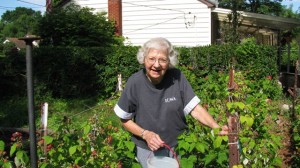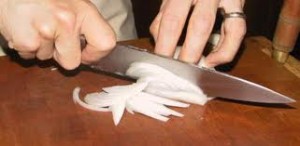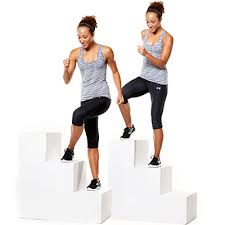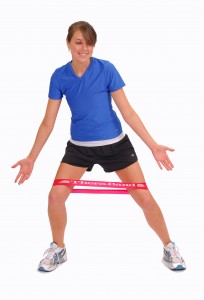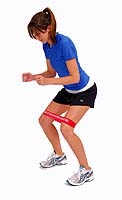Gentle Reader,
The aftermath of my bike crash calls into question two of my closely held beliefs: OTC pain meds are bad for you; keep moving, no matter what. I was on the dunes path at Long Beach, WA with twelve Finneys of all ages. Nothing like a little crowd around the beginning of the last section of trail to get a person off kilter and into the sand. My recovery seemed fine while at the beach because I was icing and taking a lot of Shaklee Pain Relief Complex and doing nothing. (My granddaughter reminds me that I split some wood with a heavy ax.) The pain worsened, keeping me awake at night. Coughing hurt unbearably. I went to my doctor. Dr. Pepin knows I am not a willing patient. He is working hard to play the role of a team member in my health care. He makes a special effort to honor my preference for natural healing practices—acupuncture, massage, individual training and supplements. He sent me for an x-ray.
When I got home, My Chart contained the message that I had broken the 9th rib on the left side, but only a hairline fracture. In his notes, he suggested more icing and anti-inflammatories. I decided to take Aleve. I took another one 8 hours later. I took a third 8 hours after that. I iced off and on for the next 36 hours. Everything improved. The depression in the muscles beneath the broken lower back rib normalized. The muscles on the opposite side calmed down to normal. I slept soundly, happy that pain did not disturb me. It seemed like a miracle.
What is so bad about NSAIDS? What do they do? Why have I resisted taking them so consistently?
It turns out when taken for a brief time (2 – 10 days), anti-inflammatories calm down injured muscles allowing healing to take place. The danger with these drugs appears when taken habitually over a long period of time to manage chronic pain. The NSAIDS (non-steroidal anti-inflammatory drugs) intercept 2 enzymes called Cox 1 and Cox 2 that are involved with inflammation. Inhibiting Cox 1 has the side effect of damaging the stomach lining, causing bleeding. Advil, Motrin and Aleve are the most popular of these non-specific anti-inflammatories and regularly cause damage to the stomach lining when taken over a long period of time.
The risks from taking NSAIDS, besides internal bleeding, are most severe for people who have heart conditions. People with stomach problems should avoid them. For healthy people with no blood pressure or other heart issues, taking NSAIDS for a few days to bring down inflammation carries low risk and brings much relief.
I am satisfied that taking NSAIDS for a few days to help the immediate problem is a good thing for my body and does not put me at risk.
Now let me think out loud about my other closely held belief: Keep Moving under any and all circumstances. This week I have not hiked, gone to yoga practice, worked out with my trainer or done much of anything. I did walk around Green Lake, a 3 miles meander on the flat, and twice I walked to the West Seattle Junction, down and up a hill, repeated in the opposite direction, about 2 miles total. Moving, yes; pain free, pretty much. At least pain free around the injured area. But after a dozen steps, chronic pain kicked in: hips, knees and lower back. I found myself questioning the value of moving, especially since moving causes pain.
It turns out that Not moving is lethal.
Bone Loss
According to the University of Maryland Medical Center, our bones require applied stress for them to grow. Bone stress sends a signal to the body to build bone density. If you don’t stress your bones by exercising, you can suffer from low bone density, which can turn into a case of osteoporosis. Also, if you never exercise and stretch your joints, your arthritic joints will stiffen over time and their adjoining tissues will weaken, causing more arthritis.
Muscle Loss
Your bones need stress exerted on them to grow, and so do your muscles. A muscle’s fibers need to tear for it to rebuild itself larger and stronger. So as you may already know from experience, if you don’t use your muscles, you “lose” them.
Increased Risk of Disease
Muscle loss caused by inactivity makes your metabolism slow down. Your metabolism is the rate at which your body converts food and drink into usable energy. If you have a slow metabolism, your body ends up storing a lot of the food and drink energy instead of using it to get your body moving. This storage leads to weight gain and puts you at a higher risk for heart disease, Type 2 diabetes, breast cancer, depression and anxiety, according to Harvard School of Public Health.
Weaker Immune System
According to MayoClinic.com, without regular aerobic exercise, your immune system weakens. This makes it harder for your body to fight viruses such as the flu and the common cold. So if you never exercise, you’re likely to find yourself getting sick more often.
Keep Moving will remain my closely held belief. Since the pain I experience when I move is chronic, caused by arthritis, I will continue to use Shaklee’s Pain Relief Complex. Its herbal formula is a pain path inhibitor (Cox 2 and 5 Lox) but does not interfere with Cox 1. Therefore there is no risk to the stomach or to the heart.
Be Well, Do Well and Keep Moving,
I promise I will. Join me.
Betsy
Comments? I love to hear them.
Thanks to Lindsay Haskell of AZ who blogs about health, fitness, culture and fashion.
![Long_Beach_7-16-14jpg_(1)_(2)[1]](http://www.grandmabetsybell.com/wp-content/uploads/2014/07/Long_Beach_7-16-14jpg_1_21-300x222.jpg)
